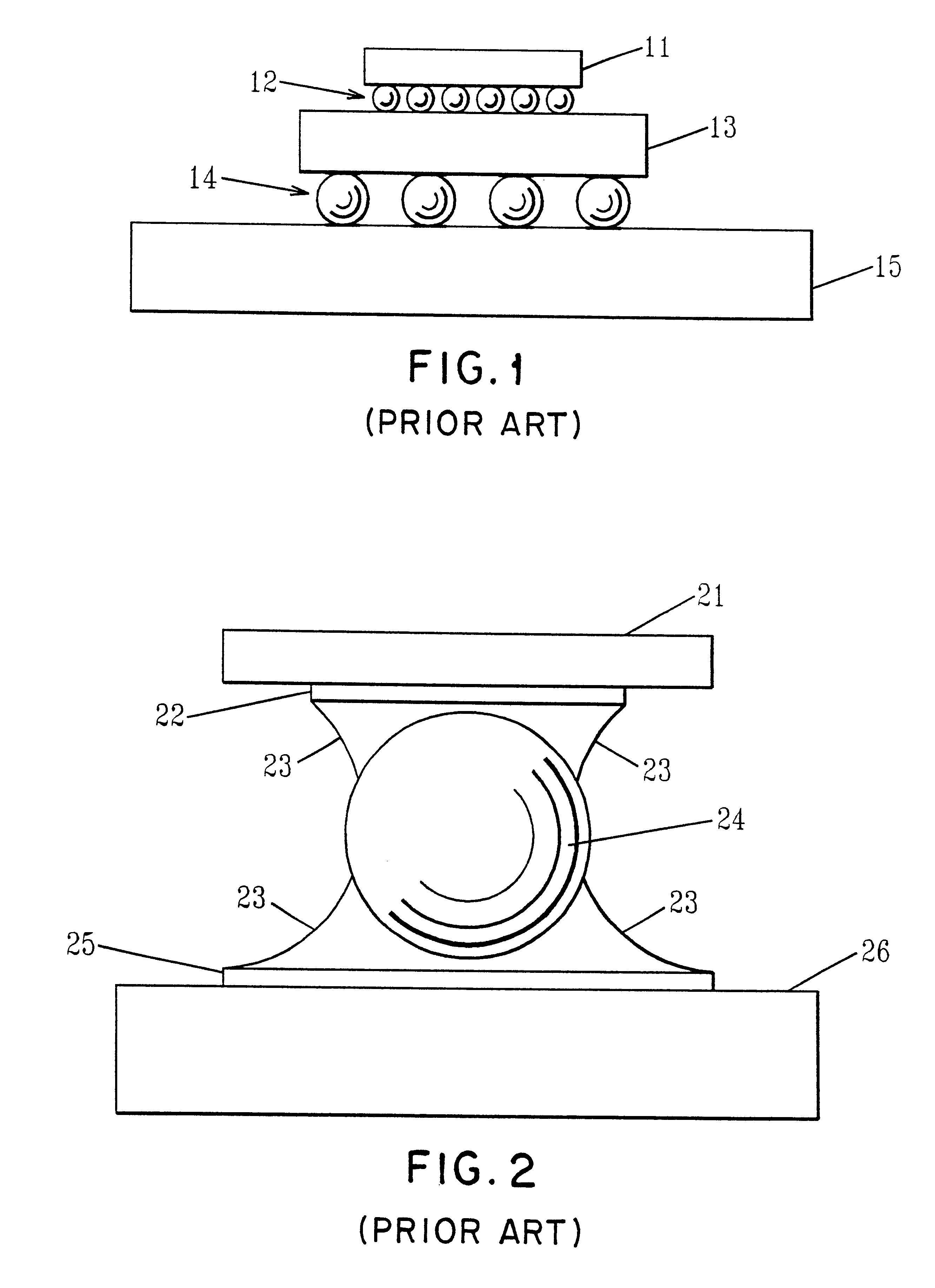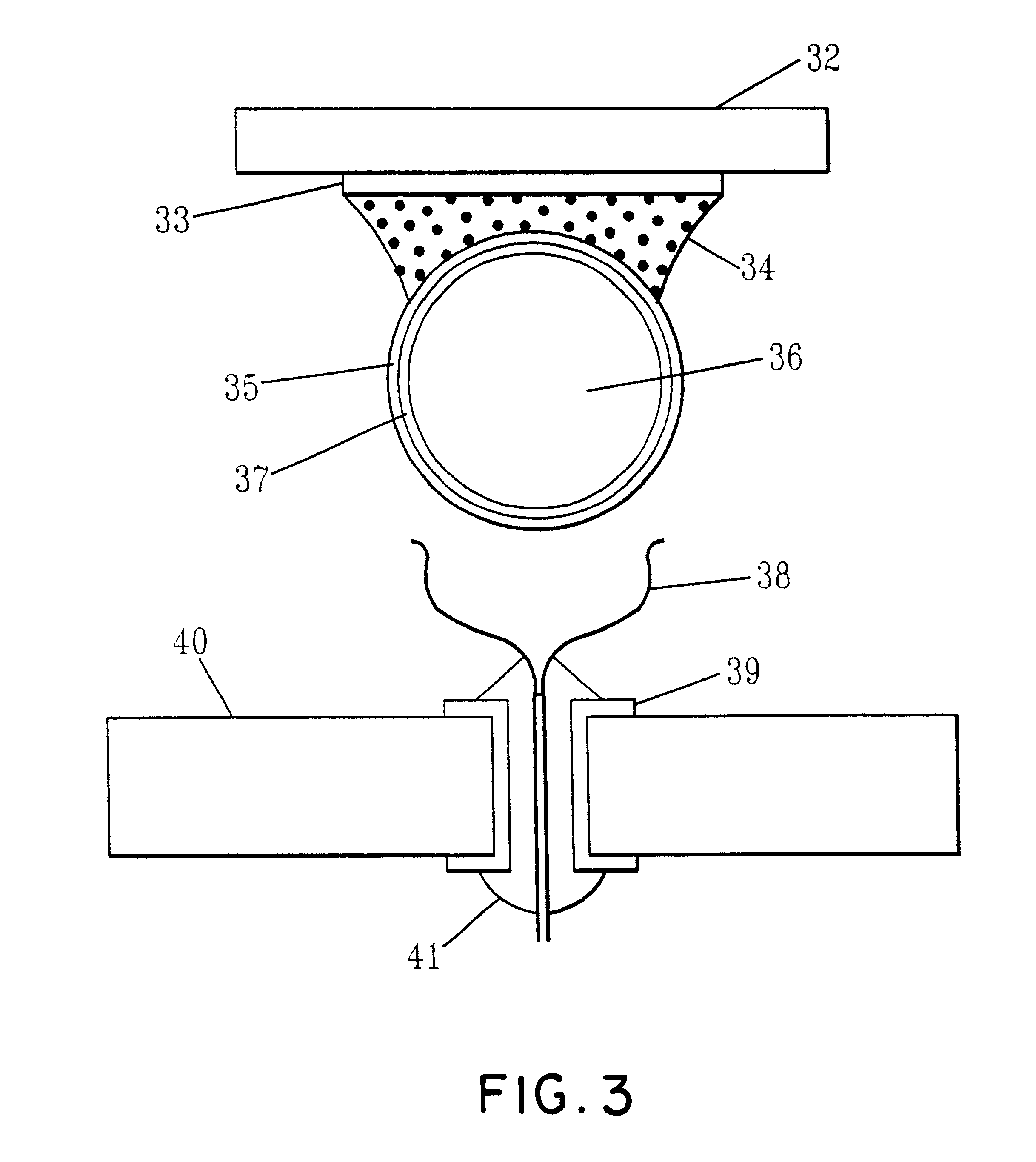Structure, materials, and methods for socketable ball grid
a socketable ball and grid technology, applied in the direction of manufacturing tools, sustainable manufacturing/processing, final product manufacturing, etc., can solve the problems of difficulty in visual inspection of solder joints, and difficulty in testing the bga assembly without damage to the soft solder bga, etc., to avoid thermal cycling induced failures, stable bga joint structure, and easy demountability
- Summary
- Abstract
- Description
- Claims
- Application Information
AI Technical Summary
Benefits of technology
Problems solved by technology
Method used
Image
Examples
Embodiment Construction
In order to facilitate an understanding of the present invention, reference will be made to FIG. 3.
In a preferred embodiment of the present invention, schematically shown in FIG. 3, the electrically conducting adhesive (ECA) is prepared by mixing a conducting powder filler, for example copper coated with a fusible material such as tin, with a thermoplastic polymer resin, such as polyimide siloxane, and a small amount of no-clean flux as taught in our previous patent application U.S. Ser. No. 08 / 641,406, disclosure of which is incorporated herein by reference. The mixture is homogenized using a three roll shear mill to ensure uniform dispersion of the powder in the polymer.
Examples of suitable electrically conductive adhesives 34 are disclosed in U.S. Ser. No. 08 / 641,406; U.S. Ser. No. 08 / 883,188; U.S. Ser. No. 60 / 052,172; U.S. Ser. No. 08 / 868,771 and U.S. Ser. No. 08 / 877,991, all of which are assigned to International Business Machines Corporation, the assignee of the present applic...
PUM
| Property | Measurement | Unit |
|---|---|---|
| thickness | aaaaa | aaaaa |
| diameter | aaaaa | aaaaa |
| thickness | aaaaa | aaaaa |
Abstract
Description
Claims
Application Information
 Login to View More
Login to View More - R&D
- Intellectual Property
- Life Sciences
- Materials
- Tech Scout
- Unparalleled Data Quality
- Higher Quality Content
- 60% Fewer Hallucinations
Browse by: Latest US Patents, China's latest patents, Technical Efficacy Thesaurus, Application Domain, Technology Topic, Popular Technical Reports.
© 2025 PatSnap. All rights reserved.Legal|Privacy policy|Modern Slavery Act Transparency Statement|Sitemap|About US| Contact US: help@patsnap.com



